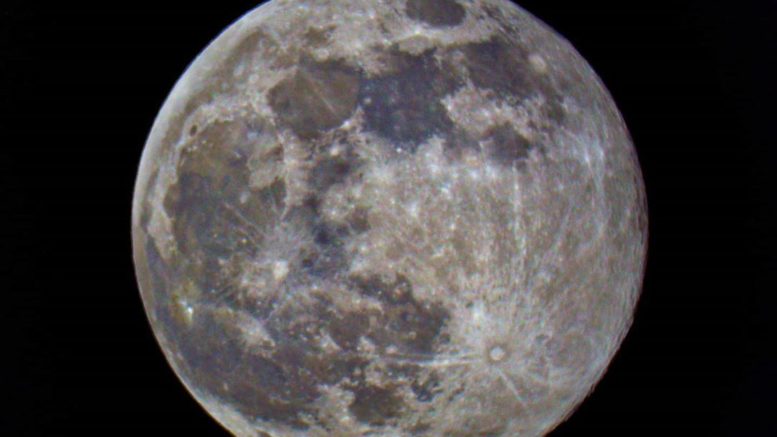Lunar craters are impact craters that can be seen on the surface of the Earth’s Moon. All of the craters that make up the Moon’s visible surface were made by impacts at one point in time in the Moon’s history.
First seen in detail by Galileo in 1609, the origin of these craters were a hotly debated topic for 300 years. It wasn’t until the mid 1950s that the idea of impacts creating the craters on the lunar surface were seriously considered. Moreover, it wasn’t until the Apollo program returned samples of lunar material that the idea of impact craters was solidified.
Typical characteristics of craters have some or all of the following features, which have lightly eroded due to the lack of an erosion agent such as weather:
- a surrounding area with materials splashed out of the ground when the crater was formed; this is typically lighter in shade than older materials due to exposure to solar radiation for a lesser time
- raised rim, consisting of materials ejected but landing very close by
- crater wall, the downward-sloping portion of the crater
- crater floor, a more or less smooth, flat area, which as it ages accumulates small craters of its own
- central peak, found only in some craters with a diameter exceeding 16 miles; this is generally a splash effect caused by the kinetic energy of the impacting object being turned to heat and melting some lunar material.
Classification of lunar craters is done by scientists in 1979, which saw the classifications divided into the following groups:
- ALC — small, cup-shaped craters with a diameter of about 6.5 milesor less, and no central floor.
- BIO — similar to an ALC, but with small, flat floors. Typical diameter is about 9.5 miles.
- SOS — the interior floor is wide and flat, with no central peak. The inner walls are not terraced. The diameter is normally in the range of 9.5–15 miles.
- TRI — these complex craters are large enough so that their inner walls have slumped to the floor. They can range in size from 9.5–31 miles in diameter.
- TYC — these are larger than 31. miles km, with terraced inner walls and relatively flat floors. They frequently have large central peak formations.
Started by Giovanni Battista Riccioli in 1651 and later picked up by the International Astronomical Union, naming of the nearly 1,000,000 craters larger than half a mile across are closely regulated.[1] Although there are craters named by their location or geographic features, “almost all lunar craters are named after late scientists and explorers.”[1]
A great map of lunar craters can be found here. Here is a great map that can be used to help identify different craters.
If you’re curious to learn more about the moon, check out our lunar related content such as “The Moon Bishop,” the Behind The Full Moon series, and information about lunar eclipses.

Be the first to comment on "Lunar Craters: An Introduction"